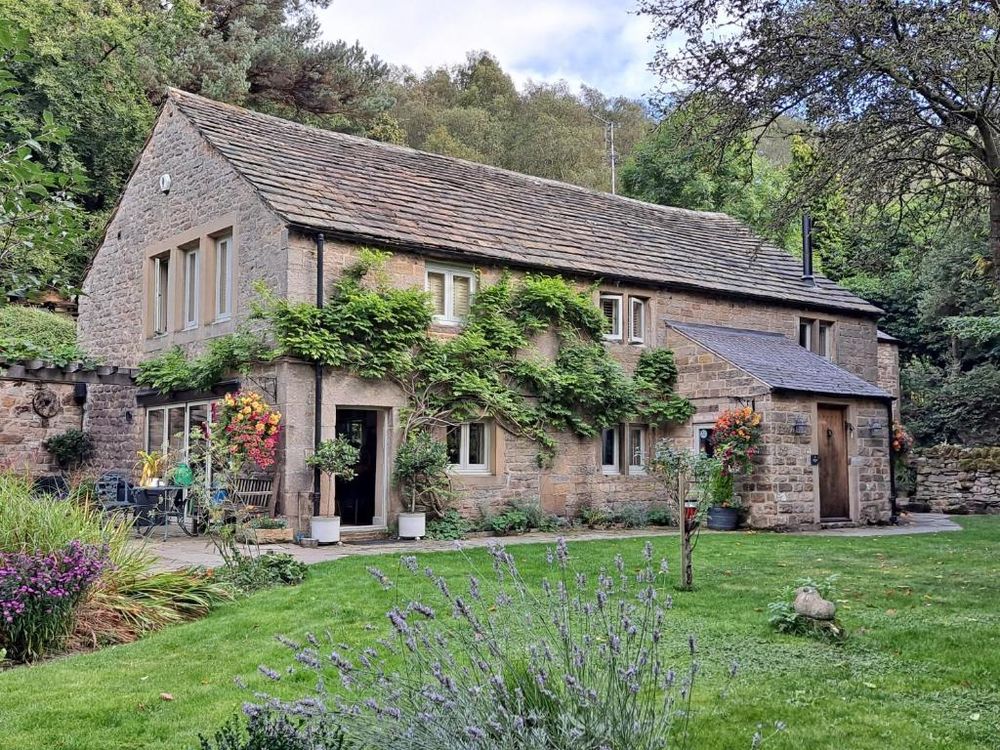 Manchester
Manchester
If the urban hustle-and-bustle of Manchester threatens to feel a little too suffocating during your city break, you’ll be pleased to know that it is surrounded by some of the most splendid natural scenery that England has to offer: the Cheshire Plains to its south, the Saddleworth Moors to the north-east, and, encompassing its western limits, the world-famous Peak District National Park, which, in 1951, became the first designated national park in the UK. Defined by its extraterrestrial moorlands, dramatic limestone landscapes, and singular geological interest points, the Peak District spreads 1,440 square kilometres out towards the city of Sheffield, another former industrial bastion in the North. Littered with legendary manor homes straight out of a Jane Austen novel and delightfully English towns that seemingly grow out of the spectacular landscape, the Peak District is the perfect place to get lost for a day or two in bucolic scenery and pastoral idyllicism. So, here’s our guide to our favourite day-trip spots in the incomparable Peak District.

Bamford Edge Hill in the Peak District, England.
- © Daniel_Kay / Shutterstock- The Peak District’s Most Unmissable Spots
- Our favourite hotel near Chatsworth House
- Castleton, the Gorgeous Village at the Devil’s Arse
- Our favourite hotel in Castleton
- Buxton, a World-Famous Spa Town in the Heart of the Peaks
- Book an unforgettable night at the Buxton Crescent
- Bakewell, the Cherry on the Peak District’s Cake
- Our favourite hotel in Bakewell
The Peak District’s Most Unmissable Spots
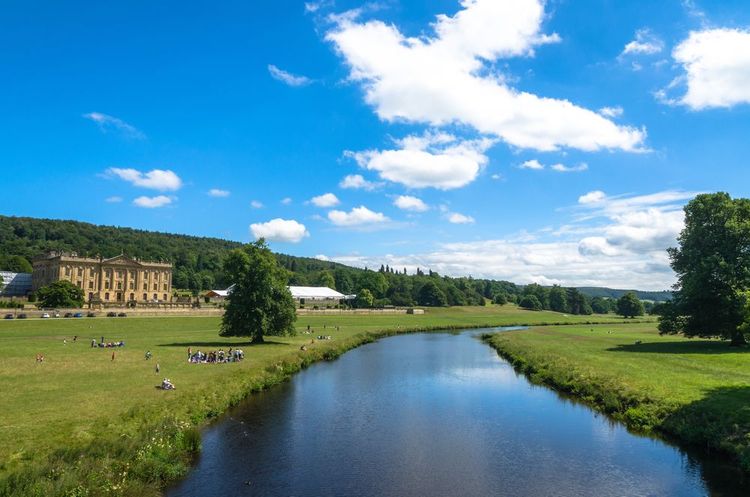
A view of Chatsworth House by the River Derwent.
- © Tim M / ShutterstockChatsworth House, hidden in the heart of the Derbyshire Dales along the spectacular River Derwent, is the seat of the Duke of Devonshire and has been in the Cavendish family, one of England’s wealthiest and most powerful aristocratic families, for sixteen generations. The first iteration of the home was built by Bess of Hardwick in 1553, a lavish Tudor mansion where Mary, Queen of Scots stayed several times while under arrest in the 1570s. During the English Civil War (1642-51), the house was a hive of violence and vacillated between Roundhead and Royalist control, unfortunately barely surviving the unrest and subsequently being demolished almost entirely by William Cavendish, 4th Earl and 1st Duke of Devonshire in the 1680s. The current mansion, with its imposing Italianate facade, is the child of the 1st Duke of Devonshire’s renovations and rebuilding, although the home and its gardens have been in a constant state of evolution ever since, most notably seeing a five-decade-long series of expansions and upgrades under the 6th Duke of Devonshire during the 19th century. These included the construction of the North Wing which notably houses the Duke’s Sculpture Gallery and the transformation of the 105-acre gardens by acclaimed horticulturist Joseph Paxton, elsewhere responsible for designing the Crystal Palace in London.
The Cavendish family still resides in the home today, and they keep some thirty rooms and the entirety of the gardens open to the public for a small fee. Among these are the 6th Duke of Devonshire’s Sculpture Gallery, the Painted Hall, the State Rooms, and the family chapel. Meanwhile, highlights of the gardens include the Cascade, a fluvial 17th-century water feature in which water magnificently tumbles from a hilltop temple to feed the rest of the formal gardens, and the Emperor Fountain, built to welcome Tsar Nicholas I of Russia to the home in the 1800s. It was the tallest fountain in the world at the time.
Chatsworth House also contains the Devonshire Collections, one of Europe’s most significant art collections amassed by the family over the course of their 500 year occupancy of the home. It encompasses everything from painting to metalwork to manuscript to jewellery to furniture and covers 4,000 years of human history, from ancient Egyptian relics to contemporary experimental ceramic. Artists found in the collections include Raphael, Veronese, van Dyck, Velazquez, Rembrandt, Poussin, Freud, and de Waal. Their works are now dotted around the home, waiting to be discovered.
Practical Information
- Tickets to the house, gardens, and estate range in price from £7 without concessions. It is recommended that you book online in advance. For more information, visit the official site here.
- Chatsworth House is an around one and a half hour drive from central Manchester. A car park is available to visitors at a cost of £5 per vehicle. Alternatively, the High Peak Skyline 199 service runs between Manchester Airport and Buxton from which the High Peak 58 service runs to Chatsworth. Matlock and Sheffield train stations are also serviced from Manchester and provide access to Chatsworth by bus. For more travel information and guidance, see the Chatsworth visitor information page here.
- Chatsworth House is open seasonally, seven days a week from 10:30am to 4:30pm. The gardens are open until 5pm. To learn more, visit the official site here.
- Chatsworth House is an accessible attraction. For more information, visit the website here.
Our favourite hotel near Chatsworth House
 Manchester
Manchester
Castleton, the Gorgeous Village at the Devil’s Arse
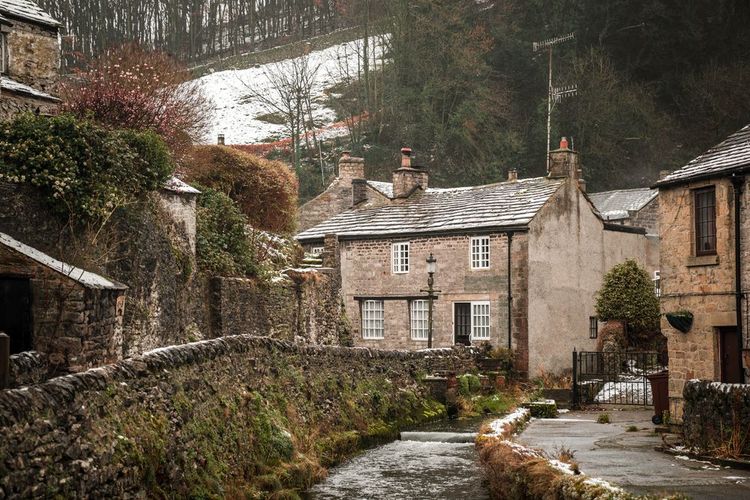
Castleton’s beautiful old idyllic village cottages along the Peakshole Water brook.
- © Matthew Troke / ShutterstockA quintessentially English hamlet located in the shadow of towering Mam Tor, Castleton is a tourist favourite steeped in intrigue and legend. First settled by the Celts before being superseded by the Romans, the village is registered in the 11th-century Domesday Book under the name Pechesers (literally translated as ‘Peak’s Arse’) and is one of Britain’s oldest mining sites. The rich lead veins in the surrounding hillsides were first exploited by the Romans in the 3rd century AD and saw intermittent use up until the 19th century; Odin Mine is believed to be among the oldest in England and is a registered Scheduled Ancient Monument under the 1979 Ancient Monuments and Archaeological Areas Act. The modern-day name Castleton, or “Castle Town”, comes from the now ruinous castle that overlooks the village from atop a looming limestone outcrop. It was built in the 11th century by William Peveril, a Norman knight who was allegedly the bastard son of William the Conqueror. Nowadays, the castle offers spectacular views over Castleton and the surrounding Hope Valley, but be sure not to hang around there too late - rumour has it it’s one of the most haunted spots in the Peak District.
The town’s legend is enhanced by the unique geology it is integrated into. There are four “show caves” in intimate proximity to Castleton, each with fascinating personal mythologies yearning to be discovered. Peak Cavern, which has the largest cave entrance in Britain, is an almost entirely natural cave from which Peakshole Water, the babbling rill that bisects Castleton, flows. It was historically known as the “Devil’s Arse” due to the insalubrious sounds that emanate from its gaping entrance when water drains through it (the name was changed to “Peak Cavern” so as not to upset Queen Victoria during an 1880 visit). It was also home to one of Britain’s last troglodytes who made a living by braiding ropes in the cave’s depths and was once upon a time a mythic den of thieves where notorious Tudor bandits Cock Lorel and Giles Hather met in the 16th century to device a secret “thieves’ cant” (‘thieves’ tongue’) only they would be able to understand.
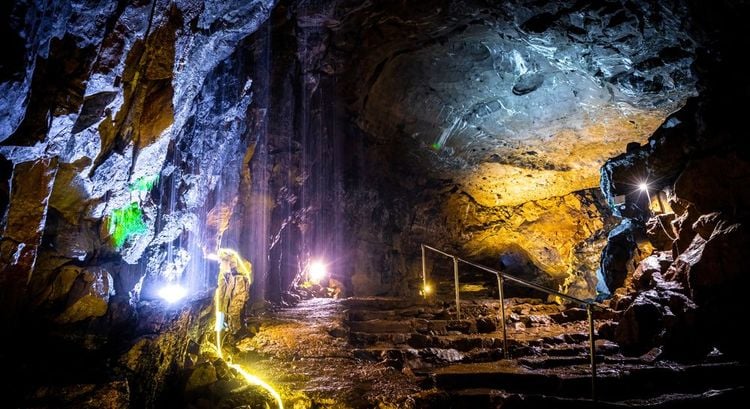
Peak Cavern near Castleton.
- © Alexey Fedorenko / ShutterstockBlue John and Treak Cliff Caverns, meanwhile, are famous for the reserves of Blue John to be found in their walls, a semi-precious purple-blue stone that is exclusively found in these two caves and has been an ornamental favourite since Roman times. Blue John vases have even been found during excavations at Pompeii! The stone is still extracted in the caves today - although well away from the tourist routes - and the gift shops at the caverns offer a range of jewellery and souvenirs made from Blue John to visitors looking for a one-of-a-kind keepsake.
The fourth of Castleton’s caves is Speedwell Cavern, its selling point being its “Bottomless Pit”, a 150-metre deep underground lake that visitors can explore by boat!
Beyond that, Castleton village itself is small but definitely worth exploring for its charming pastoral architecture and stunning natural surroundings. Summit Mam Tor for some of the best views in the country, or visit one of Castleton’s six classic English pubs for some hearty grub and a thirst-quenching pint.
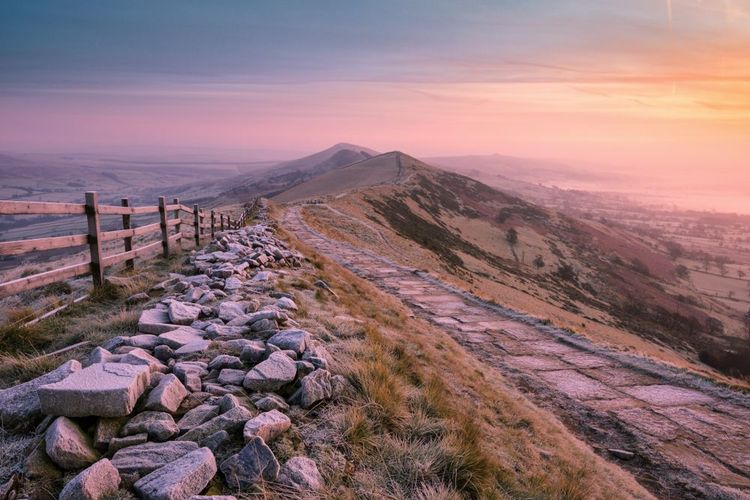
Mam Tor on a frosty autumn morning.
- © Shaun Derby / Shutterstock- Driving to Castleton from Manchester will take approximately 1 hour and 15 minutes; there is a visitor centre that offers parking in the village. Alternatively, take the train from Manchester to Edale or Hope railway stations, which are connected to Castleton by a shuttle bus. For more information, visit the visitor’s website here.
- Peak Cavern is a ten-minute walk from Castleton. It is open daily from 10am to 5pm April to October then runs a reduced schedule between November and March. Tickets start from £10. For more information, visit the website here.
- Blue John Cavern is a fifty-minute walk from Castleton and is open every day of the year from 9:30am to 3:30pm except on Christmas Eve, Christmas Day, Boxing Day, and New Year’s Day, weather permitting. Tickets cannot be booked online; a non-concession adult ticket costs £17.For more information, visit the website here.
- Treak Cliff Cavern is a twenty-five minute walk from Castleton. Treak Cliff Cavern is open daily from 9:30am to 5pm between March and November and from 10am to 4pm November to February. A non-concession adult ticket costs £14.50, or £11.50 if booked in advance. For more information, visit the website here.
- Speedwell Cavern is a fifteen-minute walk from Castleton. Speedwell Cavern is open daily from 10am to 5pm from April to October and until 4pm between November and March. A non-concession adult ticket cost £18.75. For more information, visit the official site here.
Our favourite hotel in Castleton
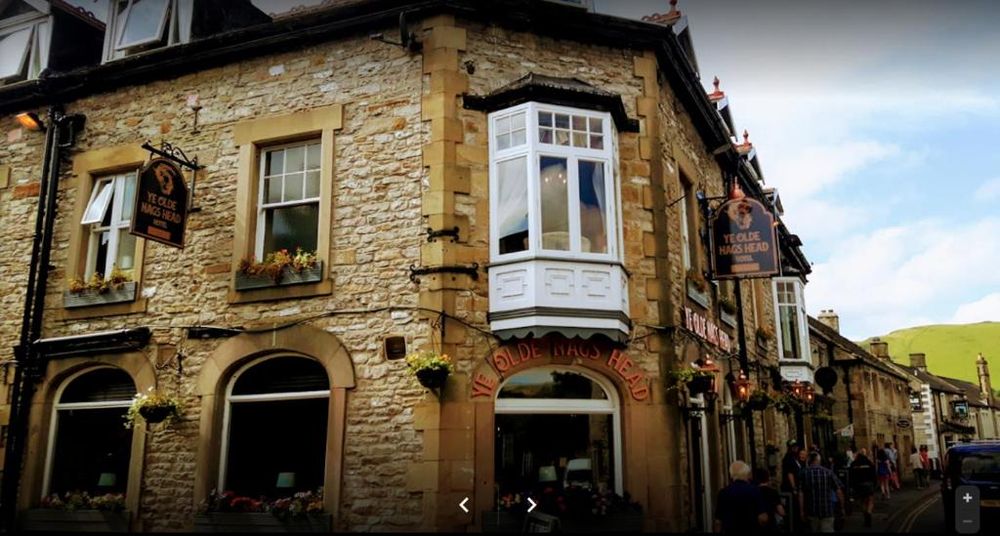 Manchester
Manchester
Ye Olde Nags Head
A lovely hotel located in Castleton, greater Manchester region.Buxton, a World-Famous Spa Town in the Heart of the Peaks

Picturesque views of Buxton's typical stone buildings from the park gardens.
- © Marbury / Shutterstock"The Sun burnt clouds but glimmer to the fight,
when at famed Buxton’s hot bath we alight
unto St. Ann the Fountain sacred is:
With waters hot and cold its sources rise,
And in its Sulphur-veins there’s medicine lies.
This cures the palsied members of the old,
and cherishes the nerves grown stiff and cold"
This is Thomas Hobbes’ description of the Buxton mineral springs in his 1636 Latin poem De Mirabilibus Pecci, better known as “The Seven Wonders of the Peak District”. The Buxton springs, revered since the Roman period for the allegedly restorative properties of the waters that flow from them, were a natural pick, despite the at-the-time underdeveloped nature of the town surrounding them. Populated since the Stone Age, the Romans were the first to truly capitalise on the natural warm waters that emanate from ground beneath Buxton and made the site one of just two spa towns they established in Britain under the name Aquae Arnemetiae (or ‘Waters of Arnemetia’ in English, a reference to the Romano-British goddess of the sacred grove).
Modern-day Buxton, however, was very much born in the Georgian period, when William Cavendish, 5th Duke of Devonshire, took interest in the magical waters and vowed to transform the spot into a contemporary resort town. The spring, for Devonshire, had family history: Bess of Hardwick had savoured the waters and often brought Mary, Queen of Scots to drink from it to ease her ailments. The Queen had so loved the mineral water that, when she was told she would no longer be able to come to the town, she etched into the window of her chamber with a diamond ring: “Buxton, whose warm waters have made thy name famous, perchance I shall visit thee no more-Farewell.”
Devonshire subsequently spent lavishly on the transformation of the land surrounding the thermal springs. The city’s centrepiece was the Buxton Crescent, modelled on Bath’s famous Royal Crescent, which featured a hotel, five lodging houses, and a painted grand assembly room. The Crescent overlooks the Slopes, home to St. Ann’s Well, where the spring waters have been pumped to since the Middle Ages. Per the 1772 Buxton Enclosure Act, the waters are public property and free to drink to all, meaning you can have a free sip if you fancy a taste of the mystical water that has made Buxton famous. Devonshire’s other main contribution was the Devonshire Dome, erected to house horses and servants for guests at the Buxton Crescent. At the time of its construction it was the largest free-standing dome in the world, and remains the largest in Britain.
Following a 17-year-long restoration project, the Buxton Crescent recently reopened as a five-star spa hotel for those wanting to unwind in the town’s thermal water. Or, the town offers plenty to see, from the aforementioned Devonshire Dome to the regal Pavilion Gardens to the nearby Poole’s Cavern, also named by Hobbes as one of the Seven Wonders of the Peak District. A trip to Buxton is the perfect opportunity to relax among beautiful natural scenery and gorgeous historic architecture.
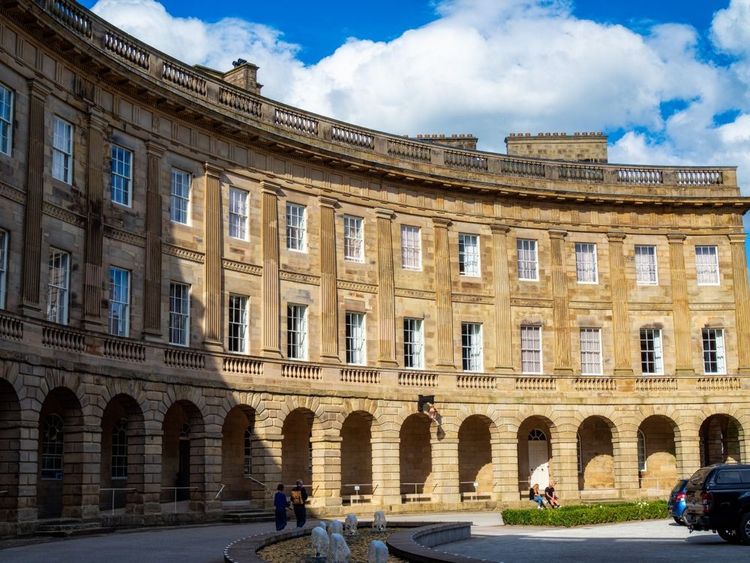
Buxton Crescent.
- © Marmalade Photos / ShutterstockPractical Information
- Buxton is a one-and-a-half hour drive from central Manchester, or an hour by train from Manchester Piccadilly Station to Buxton Station, with trains regularly leaving every half an hour.
- If you’re planning on visiting Buxton, make sure to come on a Tuesday or Saturday to make the most of the Buxton Markets that sell the best of local goods and produce. For more information, visit the website here.
Book an unforgettable night at the Buxton Crescent
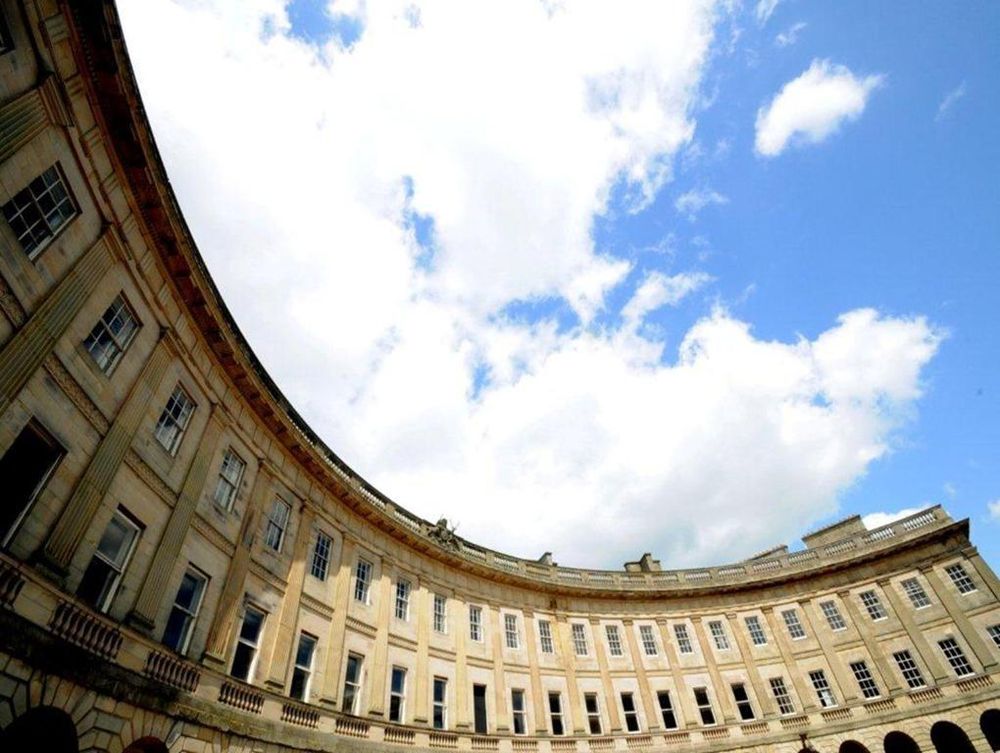 Manchester
Manchester
Ensana Buxton Crescent
A fabulous hotel located in Buxton, greater Manchester region.Bakewell, the Cherry on the Peak District’s Cake

An old abandoned lead mine on the outskirts of Bakewell.
- © Alex Manders / ShutterstockIf you’ve heard of Bakewell, it’s probably for the delicious cherry-and-almond flavoured tart that bears the same name. However, beyond its delightful desserts, Bakewell is one of the most fascinating Norman towns in the UK and is today the largest in the Peak District (Buxton is larger but technically falls outside the Peak District National Park area), offering a surprising reliquary of medieval marvels to stumble upon amidst the Constable-esque pastoral landscapes that surround the town limits.
Of course, you can’t come to Bakewell without trying its famous sweet treats though, even if locals might tell you that Mr. Kipling’s tart isn’t the true Bakewell delicacy! Rather, you will be encouraged to tuck into the ‘Bakewell Pudding’, a flaky pastry with a jam and custard-like egg and almond filling. Legend has it the treat was birthed from a 19th-century accident at a local inn, when the landlady ordered her cook to bake a jam tart, but instead of adding the egg and almond to the pastry he simply poured it on top and left it to set like custard in the oven. The inn no longer exists, however four spots in the city now claim to sell the ‘original’ Bakewell Pudding, the most popular being the Old Original Bakewell Pudding Shop in the town’s main square, which also houses a charming cafe upstairs.
After this touch of sugary, almond-flavoured indulgence, explore this Norman time capsule of a town and get lost in England’s yesteryear. Nearby Haddon Hall is an idyllic countryside amble along the River Wye away and will give you privy access to a world suspended in time. Originally built as a Norman fortress in the 12th century, it is the aristocratic seat of the Duke of Rutland and, with its castellated stone wales resplendent with ivy and climbing rose and panoramic views of the River Wye, is considered one of the most beautiful medieval manor homes in the UK. Abandoned and forgotten for some two hundred years between the early 18th century and the 1920s meaning that its original Tudor interiors were left untouched by trigger-happy home designers in the Georgian and Victorian eras. The house has since been restored to its former glory with a focus on preserving its air of the authentic, meaning you will today find in its walls genuine Tudor furniture (including the Dais table in the banquet hall) and breathtaking 15th-century frescoes and panelling adorning the walls. The interior feels such a step back in time, in fact, that it has become a favourite filming location for blockbuster period films, from Jane Eyre to Pride and Prejudice to Elizabeth to The Other Boleyn Girl.

A view of historic Haddon Hall from the gardens.
- © abcbritain / ShutterstockBakewell All Saints’ Church, meanwhile, dominates the town skyline with its unusual octagonal spire and dates to 920, although construction of the present church began in the 12th century (and then was largely reconstructed in the early 19th century due to safety concerns). The church itself is a chocolate box of religious relics: two rare 9th-century Saxon crosses can be found in the churchyard while a collection of forty carved Anglo-Saxon stones, the largest in the world found during church renovations, decorate the building’s porch. Inside the church you will find the tomb and effigy of Sir Thomas Wendsley, a knight who died during the fifteenth-century Battle of Shrewsbury, and a one-of-a-kind fourteenth-century alabaster mural of Sir Godfrey de Foljambe and his wife looking out in prayer from a Gothic balcony. The city’s most famous medieval monument, though, is the Bakewell Bridge, built in the 14th century and spanning the River Wye. With its five formidable stone arches, it is one of the best examples of medieval innovation in the UK (and one of the oldest bridges in the country).
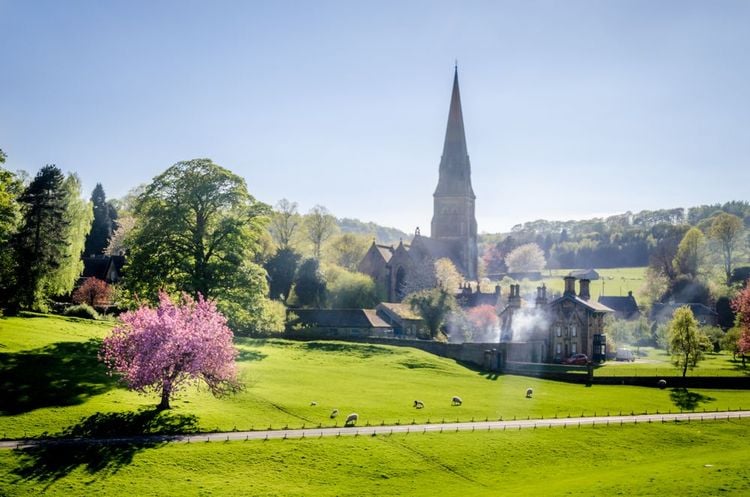
Bakewell All Saints’ Church spire looming above the town.
- © Dilchaspiyaan / ShutterstockPractical Information
- Bakewell is a one hour fifteen minute drive from central Manchester. The nearest rail stations are in Matlock, Chesterfield, and Buxton, each with regular bus services frequenting the town. For more information, please see the Peak District website here.
- Bakewell also runs a regular market, which is known as the largest in the Peak District. It is held every Monday from 9am to 4pm, while the second largest farmers’ market in the UK is held here on the last Saturday of each month. For more information, go here.
Our favourite hotel in Bakewell
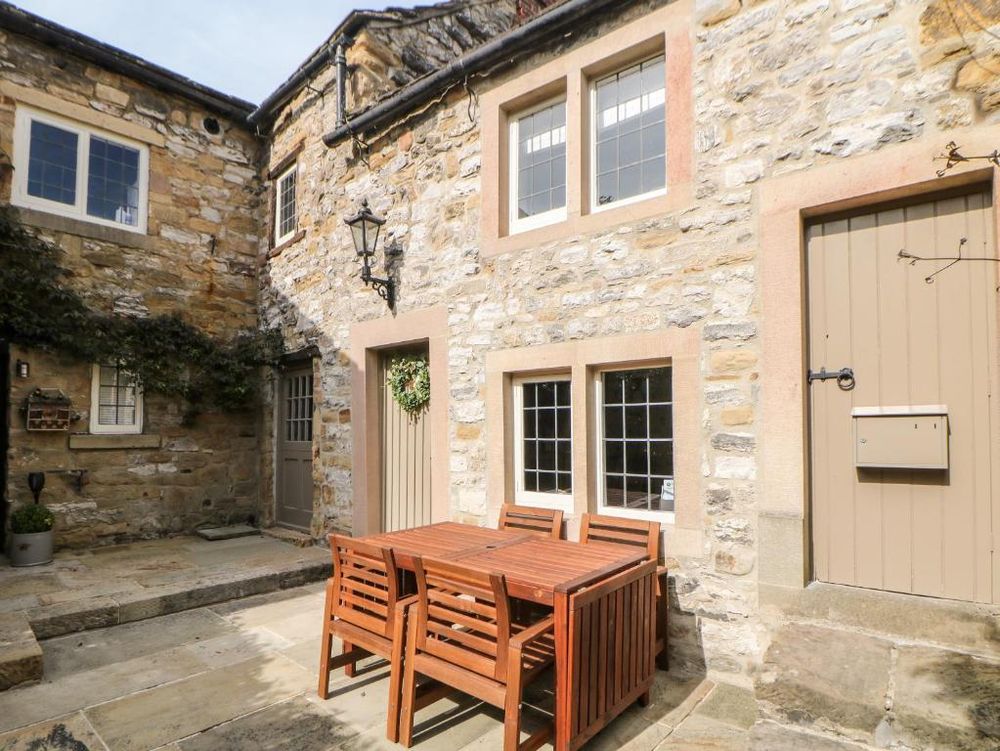 Manchester
Manchester






